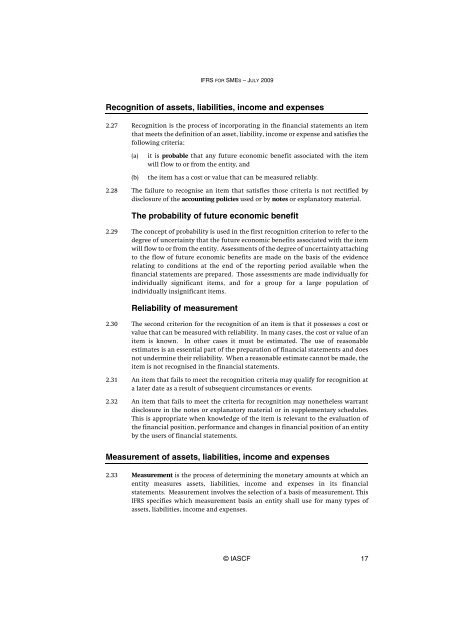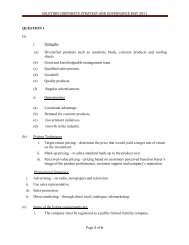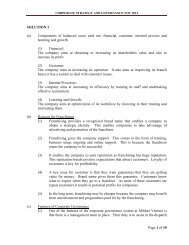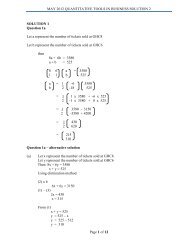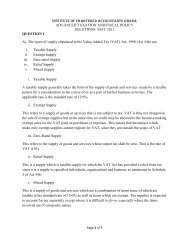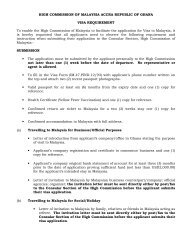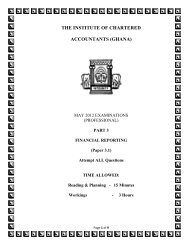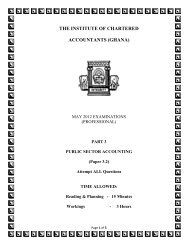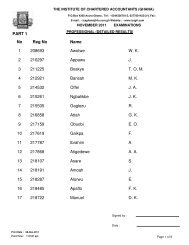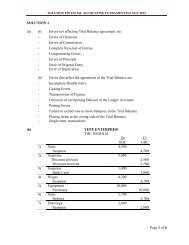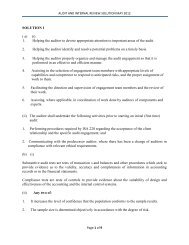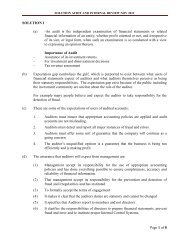(IFRS) for Small and Medium-sized Entities (SMEs)
(IFRS) for Small and Medium-sized Entities (SMEs)
(IFRS) for Small and Medium-sized Entities (SMEs)
Create successful ePaper yourself
Turn your PDF publications into a flip-book with our unique Google optimized e-Paper software.
<strong>IFRS</strong> FOR SMES – JULY 2009Recognition of assets, liabilities, income <strong>and</strong> expenses2.27 Recognition is the process of incorporating in the financial statements an itemthat meets the definition of an asset, liability, income or expense <strong>and</strong> satisfies thefollowing criteria:(a)(b)it is probable that any future economic benefit associated with the itemwill flow to or from the entity, <strong>and</strong>the item has a cost or value that can be measured reliably.2.28 The failure to recognise an item that satisfies those criteria is not rectified bydisclosure of the accounting policies used or by notes or explanatory material.The probability of future economic benefit2.29 The concept of probability is used in the first recognition criterion to refer to thedegree of uncertainty that the future economic benefits associated with the itemwill flow to or from the entity. Assessments of the degree of uncertainty attachingto the flow of future economic benefits are made on the basis of the evidencerelating to conditions at the end of the reporting period available when thefinancial statements are prepared. Those assessments are made individually <strong>for</strong>individually significant items, <strong>and</strong> <strong>for</strong> a group <strong>for</strong> a large population ofindividually insignificant items.Reliability of measurement2.30 The second criterion <strong>for</strong> the recognition of an item is that it possesses a cost orvalue that can be measured with reliability. In many cases, the cost or value of anitem is known. In other cases it must be estimated. The use of reasonableestimates is an essential part of the preparation of financial statements <strong>and</strong> doesnot undermine their reliability. When a reasonable estimate cannot be made, theitem is not recognised in the financial statements.2.31 An item that fails to meet the recognition criteria may qualify <strong>for</strong> recognition ata later date as a result of subsequent circumstances or events.2.32 An item that fails to meet the criteria <strong>for</strong> recognition may nonetheless warrantdisclosure in the notes or explanatory material or in supplementary schedules.This is appropriate when knowledge of the item is relevant to the evaluation ofthe financial position, per<strong>for</strong>mance <strong>and</strong> changes in financial position of an entityby the users of financial statements.Measurement of assets, liabilities, income <strong>and</strong> expenses2.33 Measurement is the process of determining the monetary amounts at which anentity measures assets, liabilities, income <strong>and</strong> expenses in its financialstatements. Measurement involves the selection of a basis of measurement. This<strong>IFRS</strong> specifies which measurement basis an entity shall use <strong>for</strong> many types ofassets, liabilities, income <strong>and</strong> expenses.© IASCF 17


